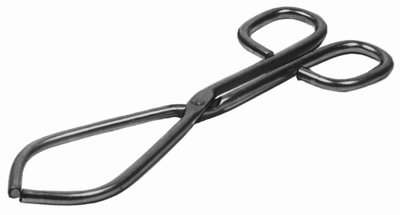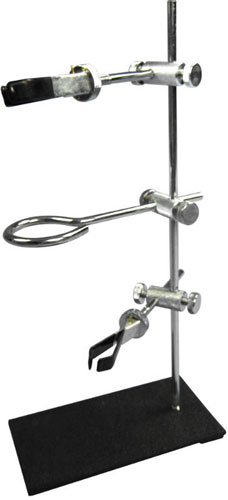Bunsen burner- is a staple part of the standard laboratory apparatus set. It gives off heat through a vertical flame and so is ideal to be used when wanting to warm up test tubes or beakers full of liquids.

Gauze mats- are used to stand containers or material on when it is normally placed over a tripod.

Test tubes- are probably one of the most iconic apparatus of a typical laboratory. They are used to combine liquids and also heat them up.

Tongs- are very useful when conducting any experiments that involves either intense heat or harmful substances. The tongs allow you to grip and move things without having to touch it with your hands.
Tripod - is used frequently in the laboratory and is usually accompanied by a gauze mat that is placed on top of it.
Pipette- is used to transfer small quantities of liquids and to accurately drop them into test tubes or beakers.

Forceps - holds or pick up small objects
Graduated cylinder - measures approximate volume of liquids

Condenser - used in distillation
Funnel - used to transfer solids and liquids without spilling

Test-tube holders - for holding test tubes when tubes should not be touched

Volumetric flasks - to measure precise volumes of liquid or to make precise dilutions.

Ring stand (with rings or clamps) - for holding pieces of glassware in place.

Centrifuge - separates materials of varying density


Crucible - used to heat a small amount of a solid substance at a very high temperature
Wire Gauze – used to support a container (such as a beaker or flask) during heating.

Clay triangle - a wire frame with porcelain used to support a crucible

Mortar & Pestle - The mortar is the dish and the pestle is the grinder. They are used to crush or grind up chemicals.

FLINT LIGHTER - Is used to ignite the flame of a BUNSEN BURNER. The gas collects inside the small cup, and the spark created ignites the gas.















